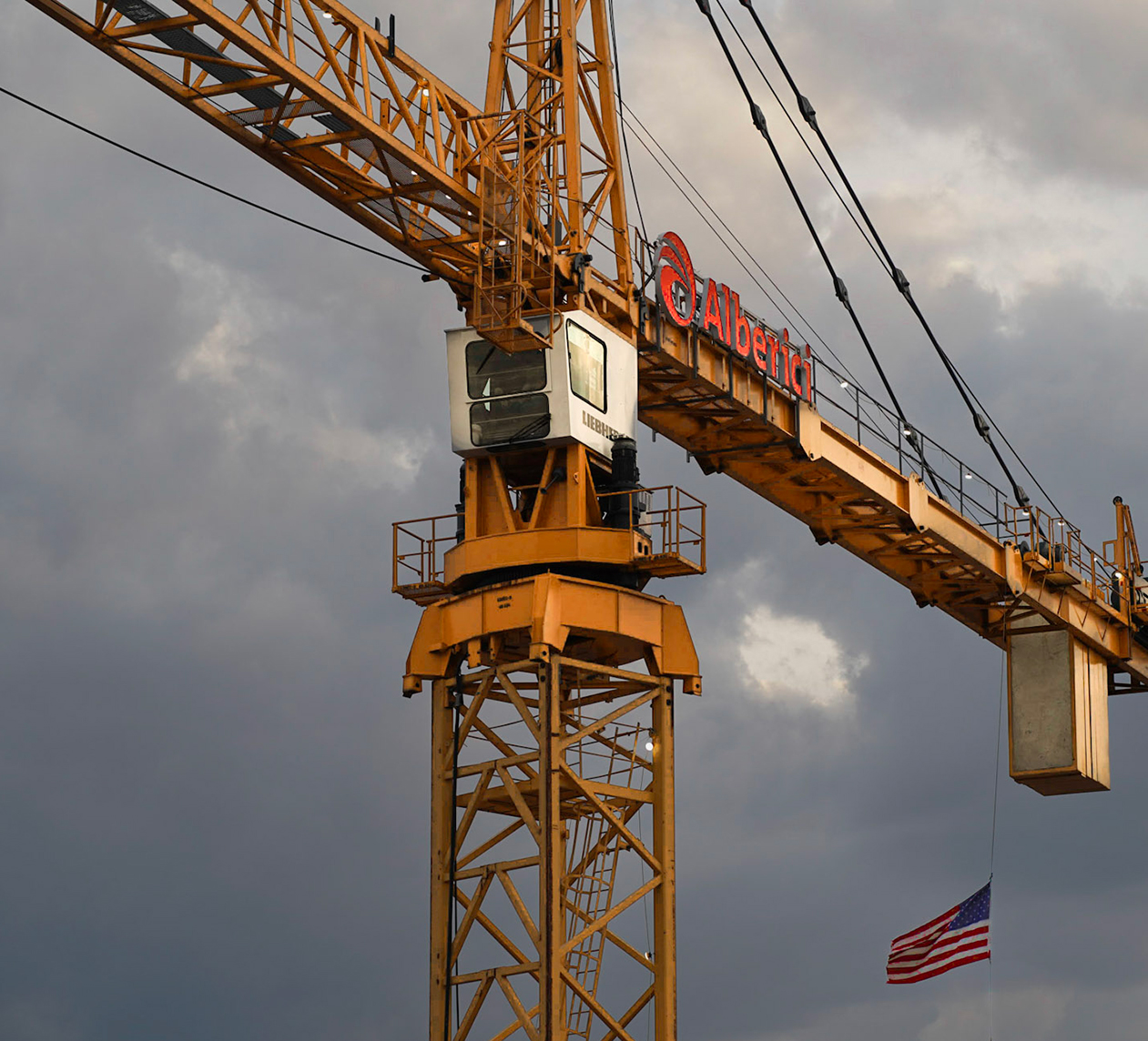News & Insights
Empowering a Culture of Safety in the Industry

At Alberici and throughout the industry, safety is a core value that drives us to ensure that every person gets home safely every day. Having devoted my career to the construction industry in a variety of roles, I can say with confidence that building strong teams who work safely is our most important job.
I am proud of the strides we have made to create a stronger and safer environment, such as developing campaigns like Construction Safety Week – but there’s still more work to be done.
Creating Safe and Productive Work Environments
With the inherent risks in the construction industry, it is important to create an environment of trust across teams ensuring everyone is confident and feels safe. When craft professionals come to a work environment built on trust and values of safety, they are more engaged and productive. Events like those coordinated through Construction Safety Week are the perfect avenue to facilitate meaningful dialogue to build trust within teams.
In a study conducted on 1.8 million employees and reported in the 2022 Gallup State of Global Workplace report, researchers found a “strong correlation between employee engagement and performance outcomes such as retention, productivity, safety, and profitability.” The employees in the bottom percentage of engagement had 64% more incidents than those at the top percentage of employee engagement.
Craft professionals play a powerful role in preventing job-site incidents when they feel empowered to speak up in unsafe situations. Industry leaders can help reduce the number of job-site incidents and avoid fatal and non-fatal injuries with their support and investment in ensuring their teams have the knowledge, desire, and ability to plan and execute safe work to support the efforts of our craft professionals. This leads to a healthy, safe, and trusted job-site that keeps every person onsite safer and reduces long-term costs for the company.
Investing in Proper Safety Equipment
Proper safety equipment, such as high-quality head protection, is critical in safety initiatives on job-sites. Falls, slips, and trips are the leading causes of death in fatal traumatic brain injuries (TBIs). A 2016 study in the American Journal of Industrial Medicine revealed from 2003 to 2010, 2,210 fatal TBIs occurred, making up 25% of construction fatalities. The Bureau of Labor Statistics reported more than 5,000 construction fatalities between 2015 – 2019 with falls.
While safety helmets are not a substitute for fall protection, they increase protection to the sides, back, and front of the head while also less likely to fall off due to the chin strap, should a slip, trip, or fall occur. By investing in safety helmets, companies may have higher upfront costs, but long-term protection is invaluable.
This video from a previous Safety Week shows how safety helmets dramatically reduce the frequency and severity of traumatic injuries and fatalities on construction sites.
The other three primary job-site injuries – electrocution, struck-by-an-object, and caught-in-between – are important in the conversation about safety. All injury types have the potential to be fatalities or, in the case of non-fatal injuries, carry long-term physical and mental wellness effects on the individual beyond the initial impact.

Mental Wellness and The Long-Term Impact of Injuries
According to industry research, 1 in 5 craft professionals struggle with anxiety, depression, and other mental health issues. Construction Safety Week emphasizes the importance of understanding and recognizing mental health support for craft professionals. To promote resources and offer support for individuals across the industry, the Construction Safety Week team developed a mental wellness field guide in 2022.
Early investments by companies in proper equipment, mental wellness resources, and in the employees themselves make the overall industry safer. In 2019, The National Safety Council estimated that $171 billion dollars total and just over $41,000 per injury were spent on injuries and fatalities. By taking steps to prevent and reduce the severity of injuries on the job, companies also found long-term cost savings.

The Importance of Construction Safety Week
Construction Safety Week is an opportunity for everyone in the industry to recommit to safety within their organization. While the official campaign lasts one week, it provides our industry with tools and new perspectives on safety that have a lasting impact year-round.
This year’s Safety Week theme is Strong Voices, Safe Choices, empowering every person at every level to have the confidence to speak up and act to improve safety in the workplace. With this theme, industry leaders strive toward work environments built on mutual respect and trust at all levels.
Get Involved in Construction Safety Week 2023
All companies in the construction industry are invited and encouraged to participate in the campaign from May 1-5th, 2023. Free resources and tools are available to take advantage of and create a safer environment for all professionals in the industry. These tools are available to implement during Safety Week and include promotional materials, discussion topics, event ideas, videos, at-home activities for families and materials translated into Spanish and French. Find the free tools at constructionsafetyweek.com.
Leading up to Safety Week, individuals and companies across the industry will also have an opportunity to take a safety pledge that showcases their commitment to building a strong safety culture. Participants will be entered into a giveaway for the chance to win one of ten $1,000 prizes. The pledge launches in April and will end on May 4th. Ten grand prize winners will be selected based on their written submissions and will be announced during Safety Week.
Daily Topics Explored During Construction Safety Week
- Monday, May 1: Engagement
- Tuesday, May 2: Risk Identification
- Wednesday, May 3: Brain Matters
- Thursday, May 4: Continue Learning and Demonstration Day
- Friday, May 5: Take Action and Thank You
This article originally appeared in Construction Users Round Table Blog.




